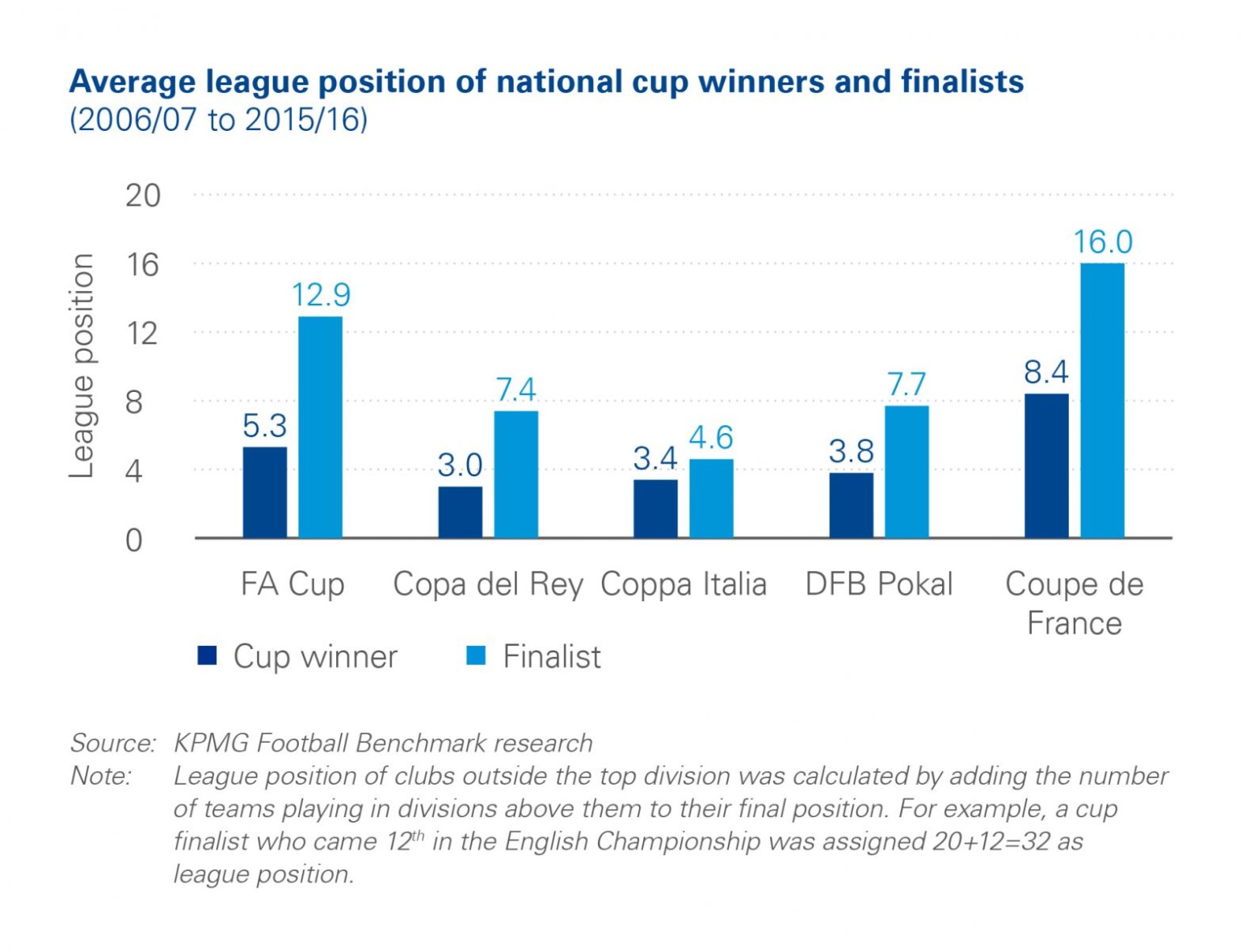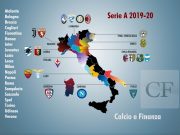We have reached the semi-finals of the Coppa Italia and the trend continues as the final four teams represent Serie A’s elite clubs.
Unfortunately yet again, no cinderella story to speak of. Serie B side Cesena kept it close against Roma, only to lose at the 96th minute on a controversial penalty. The two leg semi-final will feature Juventus vs Napoli and the derby della capitale Roma vs Lazio.
So far this season, they are ranked as follows in the Serie A standings (standings after 22 rounds, Juventus with a game in hand).
Juventus 1
Roma 2
Napoli 3
Lazio 5
Given these results, one would expect the appeal of the Coppa Italia to diminish. However, there is a contradiction. On the one hand, attendance is suffering, yet the ratings are strong on TV. This article will look into this paradox and see if the Coppa Italia is in need of reform.
Stadium Utilisation Rate
A recent study published by KPMG football benchmark compared the national cup competitions of the top five leagues. The Coppa Italia ranked last in stadium attendance, but first in terms of the strength of the finalists facing each other.
In other words, it is highly unlikely you’ll see a final for the Coppa Italia featuring a club other than the ones that finish in the top ranking of the Serie A standings. You won’t see a David vs Goliath scenario of a mid to lower table club going to the final, let alone an improbable scenario where a Serie B wins it all.
Last year was an exception with Lega Pro side Alessandria defeating Genoa to reach the semi-final, and then getting thrashed by Milan 6-0 on aggregate. Apart from a few exceptions, stadium attendance, or lack thereof, remains a problem and it is not limited to league matches but also applies to the cup matches as well. What can be done to improve the fan experience and encourage people to go to the stadium to watch the games rather than on tv can be discussed at length – but that is another topic for another day !

The graphic shows a downward trend (from approximately a 70% utilisation rate in 2011/12 to below 50% in 2015/16). Interestingly, the Copa del Rey is also seeing a downward trend. What does the Copa del Rey and the Coppa Italia have in common? The predictability of the outcome, which is shown in the next graphic.
Average league position of national cup winners and finalists

Here we see the Coppa Italia having the strongest finalists among the top five leagues, followed by the Copa del Rey in the past ten years. Expecting little to no surprises removes any intrigue, could this explain the lack of attendance at the stadiums? Or could it be the player rotation? The Coppa Italia has always been a secondary objective for the clubs high up in the standings, so the coaches typically use this tournament as a way to reward the players who don’t get to play much in league matches. That mentality has changed in recent years, especially since the winner of the domestic cup gets an automatic spot in Europa League. The fact remains, however, that not all eleven starters will be the same like a regular match.
TV audience – the contradiction
While difficulties remain to attract fans at the stadiums, ratings on TV have been very good for RAI. The games were broadcast on RAI 1 which is a channel that is a staple in Italian households. The Juventus-Milan match was viewed by over 7.5 million people, representing a media share of 27.5% making it the most viewed match of the 2016-2017 season thus far. This is comparable to the viewing numbers of the Champions League final last May that was played in Milan.
Certainly the fact that Milan has beaten Juventus twice (league match in October and Super Cup in December) added to the intrigue to see if they would be able to win on the road at J stadium. Having a channel that almost every household gets also helps.
Conclusion
Addressing the lack of attendance at the stadiums should be the primary focus of the league, while at the same time, altering the format of the Coppa Italia to add some drama.
Rather than make a major revamp, a simple change can be made to have all Serie A clubs enter the tournament at the round of 32 and remove the seeding. This would add an additional match (finalists to play 6 matches instead of 5) and possibly have two strong teams play each other sooner, thus giving an opportunity for a smaller club to advance. In addition, to add some spice to the tournament, a draw should take place to determine who will be the home team.
The current format, with the top 8 Serie A clubs entering only at the round of 16 and playing at home, puts the odds in their favour. These clubs will obviously be reluctant to potentially lose the gate receipts from a home game, but sometimes you have to think what is best for the greater good and not your own interests.
With the elections coming up for the presidency of both the FIGC and the Serie A league, perhaps a change will take place if new presidents will be elected who are progressive in their thinking and can convince the clubs to change the status quo.







































